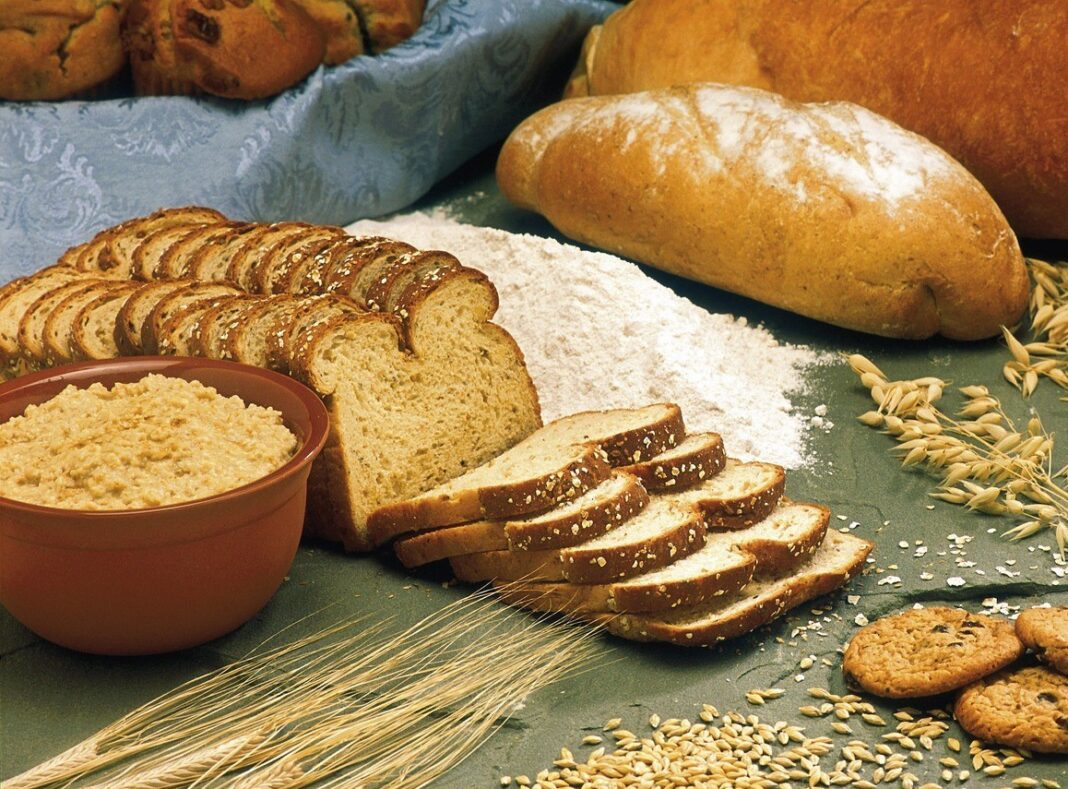The label says “whole grain,” but what is a whole grain food? And is the label stretching the truth? We investigate the meaning of whole grain, the benefits of whole grains versus refined grains, the rising popularity and marketing of the term, and the confusion about labeling. Bread, cereals, crackers, pasta, and much more are sold as “healthy.” Let’s discover the truth. This is your guide to whole grain food.
WHAT IS WHOLE GRAIN?
The first definition is quite simple. Whole grain foods contain all three kernel components, while refined grain foods contain only one (#3).
1. Bran is the outer covering of the grain. It’s the main source of fiber.
2. Germ is the core where growth occurs. It’s a source of essential fatty acids, vitamins, and minerals.
3. Endosperm is the largest part of the kernel and the biggest ingredient in white flours and breads. It provides carbohydrates, protein, and B vitamins.
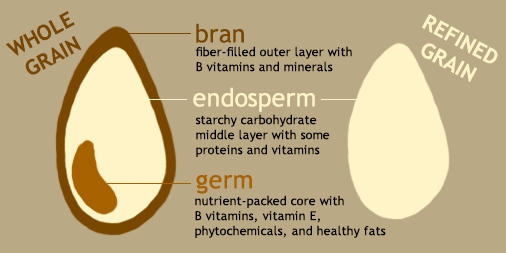
WHOLE GRAIN VS. REFINED GRAIN
The invention of industrialized roller mills in the late 19th century changed the way we process grains. Milling strips away the bran and germ and leaves only the soft, easy-to-digest endosperm. Without the fibrous bran, the grain is easier to chew. Think white bread versus whole wheat bread. The germ is removed because its fat content can limit the shelf-life of processed wheat products.
The resulting highly processed grains are much lower in nutritional quality than whole grains. Refining wheat creates fluffy flour that makes airy breads and pastries with longer shelf-lives, but the process strips away virtually all of the fiber, 90% of vitamin E, and more than half the B vitamins. Although some nutrients may be added back by fortification, other health-promoting components of whole grains, such as phytochemicals, cannot be replaced. Whole grains also have more protein. For example, whole wheat flower has 28% more protein than refined wheat flower.
WHOLE GRAIN VS. MULTIGRAIN
Multigrain sounds even better than whole grain. It’s not, and it may be inferior. As the name suggests, a multigrain food is made with multiple types of grains. However, none of these grains have to be whole. In fact, all of the grains in a multigrain food could have been stripped of the bran and germ that gives whole grains their extra fiber and other nutrients. Check the label. If, for example, a multigrain bread is made up of 100% whole grains then it’s as healthy as 100% whole wheat bread. Otherwise, it’s not.
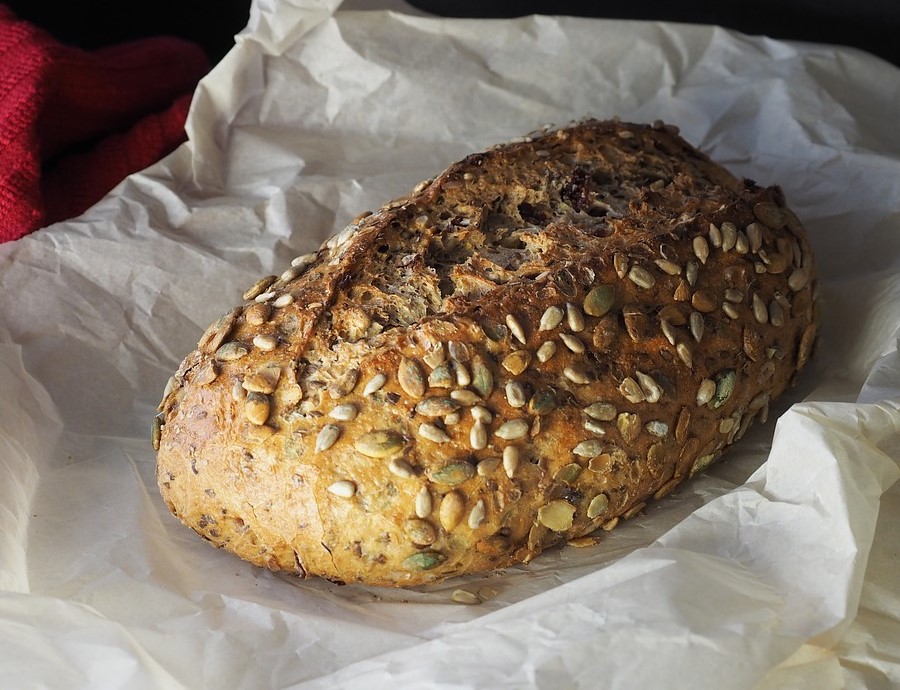
WHOLE GRAIN FOOD BENEFITS
Weight management. Fiber slows the breakdown of starch into glucose. This maintains a steady blood sugar level rather than causing spikes that signal our body to store sugar as fat. See also Fiber and Fat Loss.
Lower cholesterol via the fiber.
Improved digestion via the fiber.
Reduced systemic inflammation, which, in turn, may improve chronic disease risk.
Reduced risk of heart disease, type 2 diabetes, and colorectal cancer.
WHOLE GRAIN FOOD POPULARITY
An analysis of two decades of data, reported in a study in The American Journal of Clinical Nutrition, revealed that Americans are increasingly choosing whole grain foods over processed alternatives. However, we’re still not eating enough in our daily diets. According to the USDA’s recommendations, at least half of the grains consumed daily should be whole grains. We’re not there, despite the fact that many people want to do the right thing. Another study revealed one key reason why, which you can learn from its title: “Consumer Confusion About Wholegrain Content and Healthfulness in Product Labels.”
READING WHOLE GRAIN FOOD LABELS
It seems like it should be simple. Is it whole grain or not? It’s complicated.
Let’s turn now to the Whole Grain Council, a grain industry-sponsored group that “stamps” its approval on food packaging. There are now three whole grain stamps: whole grain, 100% whole grain, and 50%+ whole grain. 100% is the one you want. 50%+ is obviously problematic. Simple “whole grain” is the worst.
What’s wrong with the “whole grain” stamp, you may ask? This one, known as the “basic stamp,” signifies that a food has at least 13 grams of whole grains per serving. But serving sizes can vary greatly, so 13 grams may be merely a small percentage of a serving. In fact, as the Whole Grain Council’s own examples point out, it probably is. It’s probably less than 50%, and that’s why there’s a “whole grain” stamp instead of one of the other two. Additionally, and this applies to all such stamps, “whole grain” says nothing about additives, including sugar and high-fructose corn syrup, which can negate any positive effects from unprocessed, whole grains.
But let’s not just blame the industry for confusing labels. After all, most foods don’t even bother with stamps. Let’s blame the government, too. The FDA is just as lenient in its labeling.
In order to call a food whole grain, the FDA dictates that 51% of the total weight must be whole grain. And the other 49%? In that loaf of bread you’re thinking of buying it can be anything, including highly processed white flour, and as far as the Feds are concerned it’s still a loaf of “whole grain bread.” Made with whole grains is even worse since the majority of the grains can be refined—and probably are; that’s why that wording was chosen. Once again, look for 100% whole grain, which is just what what it says with no wiggle room.
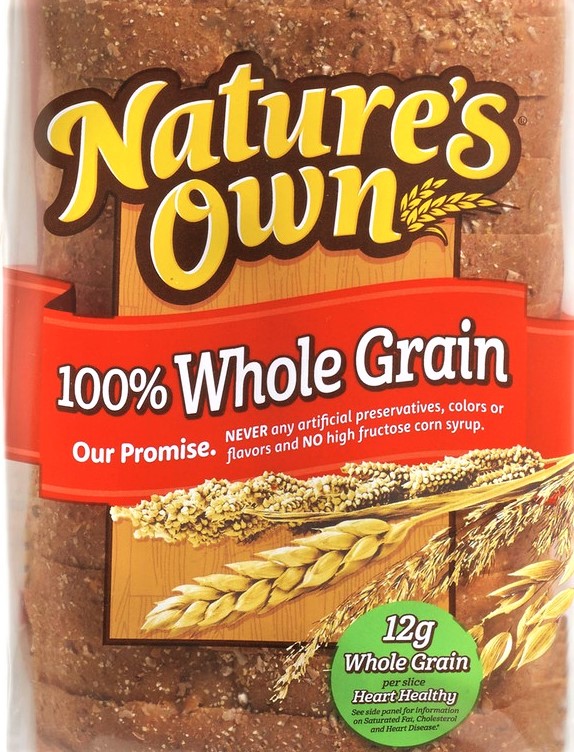
More importantly, read the ingredient list on the label. A whole grain should be the first item on that list, indicating that it’s the largest component of the ingredients. After that, any other grains should also be whole. Check for any refined grains, like white flour. And also check for unhealthy additives like sugar, high-fructose corn syrup, partially hydrogenated oil, and potassium bromate. It’s always illuminating (and saddening) to see how many “healthy” products have added sweeteners which may fully negate their healthiness.
WHOLE GRAIN FOODS
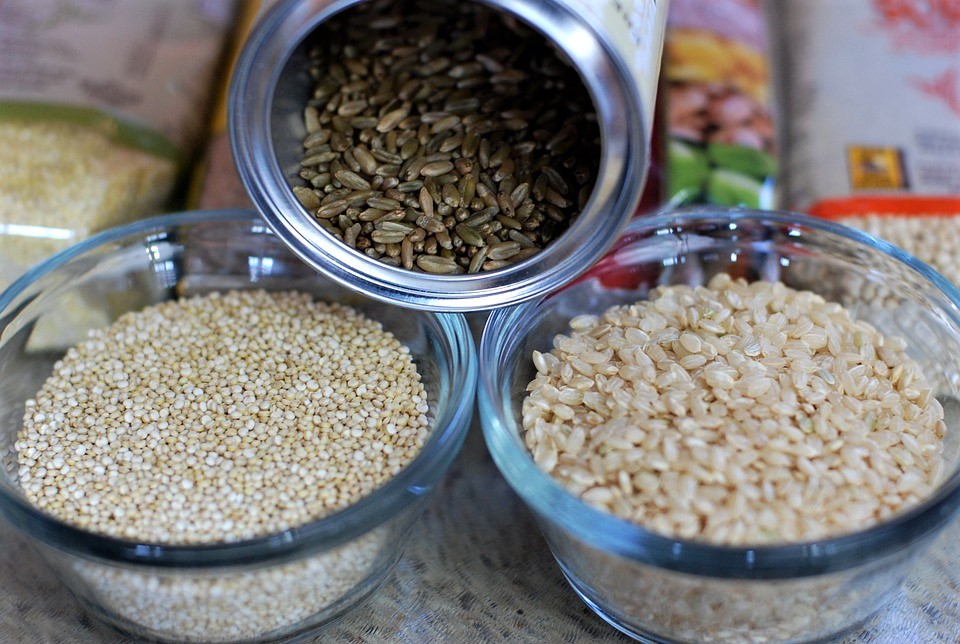
Common varieties of whole grains include the following 10. Note that brown rice and wild rice are on the list, but white rice (which is refined) is not. And also note popcorn made the list. Food products made principally from these grains—such as bread, pasta, and breakfast cereals—are considered whole grain.
barley
brown rice
buckwheat
millet
oatmeal
popcorn
quinoa
wheat berry
whole rye
wild rice
FURTHER READING
For more on how to best prepare one of the whole grains above, check out: Healthy Popcorn: Your Ultimate Guide



































